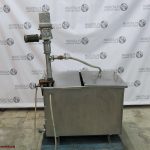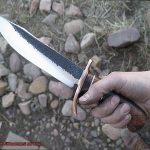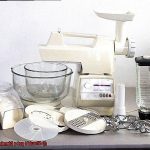Do you ever feel like your stove has a mind of its own? Are you tired of guessing which heat setting to use for your recipes? You’re not alone. Many home cooks struggle with deciphering the difference between low, medium, and simmer on their stovetop.
In this blog post, we’re going to help you take control of your stove and master the art of simmering food. We’ll break down the confusion between these heat settings and explain which one is best for your recipe.
Perfectly cooked food requires precise temperature control. Using the wrong heat setting can result in an undercooked or overcooked dish. That’s why we’re here to clarify what simmer means and whether it’s considered low or medium heat on your stove. Plus, we’ll give you tips on when to use each setting so that you can cook like a pro every time.
By the end of this post, you’ll have a newfound confidence in your stove skills and be able to create delicious dishes with ease. So let’s dive in and demystify the world of stovetop cooking together.
Contents
Why Simmer at Low Temperature?
Simmering involves cooking food in liquid at a low and steady temperature, which produces tender and flavorful dishes. But, why is it important to simmer at a low temperature? Let’s dive deeper.
Firstly, simmering at a low temperature prevents your food from burning or boiling over. High heat can cause the liquid to boil rapidly, leading to uneven cooking and burnt food. Nobody wants that. By simmering at a low temperature, you can ensure that your food cooks evenly and stays tender. Plus, the process allows for the flavors to develop slowly, resulting in a delicious and rich taste.
Secondly, simmering at low temperature allows time for flavors to meld together. When food is cooked slowly over low heat, it allows the ingredients to mingle and create complex flavors. This is especially true for stews and soups, which benefit from long simmering times. The result is an explosion of flavors that will have your taste buds dancing.
Thirdly, simmering at low temperature gives better control over the cooking process. By adjusting the heat level as needed, you can ensure that your food is cooking evenly and achieving the desired texture. This means you can experiment with different ingredients and seasonings to create unique dishes.
How to Achieve the Perfect Simmer?
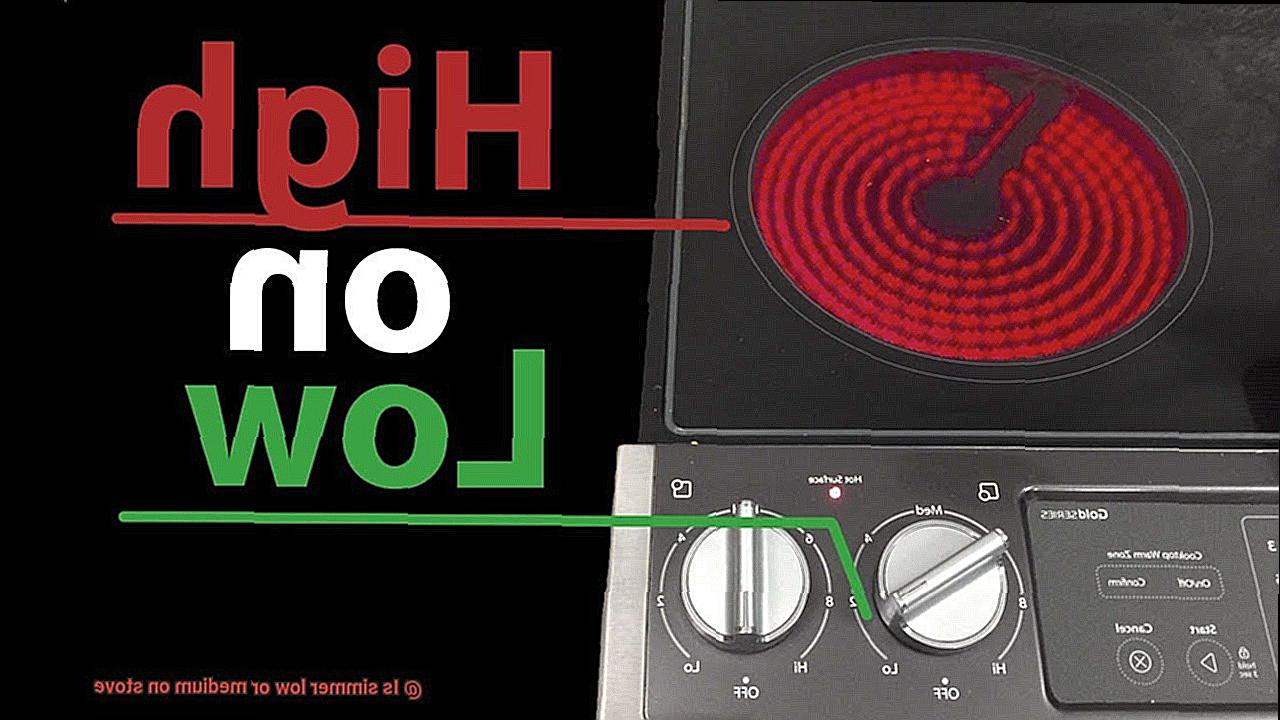
Simmering is an art that can elevate any dish to a new level. The slow, gentle cooking process allows flavors to develop and meld together, creating rich, tender, and delicious dishes. If you’re wondering how to achieve the perfect simmer, here are five sub-sections of tips that will help you get it right every time.
Understanding Simmering
Simmering is different from boiling because it involves cooking food in liquid at a temperature that is slightly below boiling point. This method typically involves heating the liquid between 180°F to 205°F (82°C to 96°C). Simmering allows for the slow development of flavors and tenderizes meat and vegetables.
Adjusting the Heat Source
To achieve the perfect simmer, start by bringing the liquid to a boil over high heat. Once it boils, reduce the heat to low or medium-low to maintain the simmer. When using an electric stove, you may need to move the pot to a different burner with lower heat settings. It’s important to monitor the pot when adjusting the heat source to prevent boiling over or evaporating too quickly.
Choosing the Right Cookware
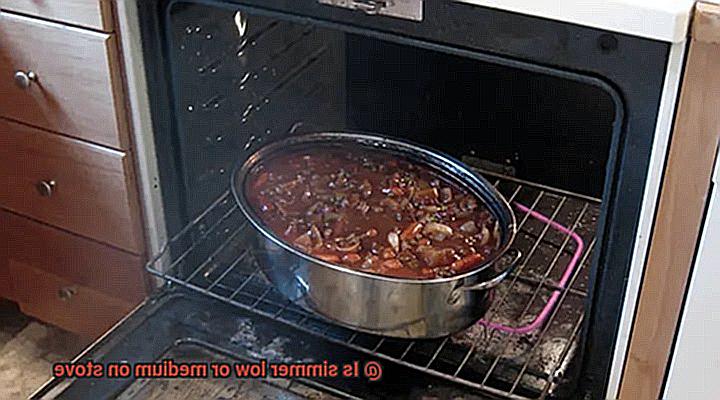
Selecting the right pot or pan is crucial when simmering. A heavy-bottomed pot with a tight-fitting lid is ideal for simmering because it distributes heat evenly and prevents liquids from evaporating too quickly. Avoid using thin pans or pots with loose lids as they can cause uneven cooking and evaporation.
Using Additional Tools
If you’re experiencing difficulty maintaining a consistent simmer, consider using additional tools like a simmer plate or diffuser. These tools help distribute heat evenly and prevent hot spots, which can cause food to burn or stick to the bottom of the pot.
Monitoring the Simmer
It’s essential to monitor the simmer closely throughout the cooking process. Too high of a temperature can cause the liquid to evaporate too quickly and lead to overcooking or burning. On the other hand, too low of a temperature can result in undercooked or tough food. Adjust the temperature as needed to maintain a consistent simmer.
What Temperature Should You Use for Simmering on a Stove?
Fear not, for the key to achieving perfectly tender and flavorful dishes lies in the art of simmering on a stove. But what temperature should you use for this method?
As an expert in this field, let me break it down for you. When it comes to simmering on a stove, the ideal temperature range is between 180°F and 205°F (82°C and 96°C). This low and gentle heat allows your food to cook slowly in liquid, resulting in rich and tender flavors.
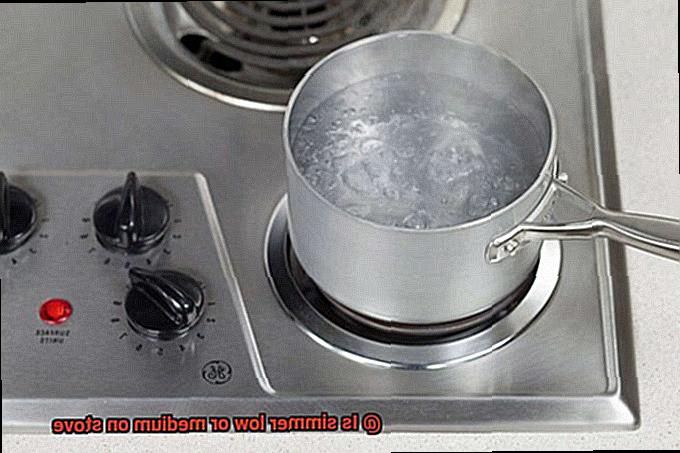
However, take caution not to let the liquid boil too rapidly, as this can break down proteins in meat and make vegetables mushy. Therefore, it’s essential to use a low flame or heat setting on your stove. Look for “low” or “simmer” settings, depending on your stove.
In addition to the right heat setting, using a heavy-bottomed pot with a tight-fitting lid is crucial. This will help distribute heat evenly and prevent evaporation, ensuring that your dish cooks thoroughly.
But how do you know if your liquid is at the right temperature? The answer is simple: use a thermometer to check. Simply insert it into the liquid and wait for the reading to stabilize. If it’s too high, adjust your heat source accordingly.
Benefits of Simmering at Low Temperature
Look no further than simmering at low temperature. This method involves cooking food at a consistent temperature between 180 to 205 degrees Fahrenheit and is commonly used in soups, stews, and sauces. But what are the benefits of simmering at low temperature?
First and foremost, simmering allows the flavors of ingredients to blend together beautifully. Unlike high-temperature cooking, which can overpower or lose flavors, simmering slowly releases the flavors of each ingredient. As they mix and meld together, they create a rich and complex taste that will make your taste buds dance with delight.
In addition to enhanced flavor profiles, simmering at low temperature also results in tender and juicy meat. Slow cooking causes the connective tissues in meat to break down gradually, making it easier to chew and enjoy. This makes it an excellent choice for preparing tough cuts of meat like pot roast, beef stew, or braised pork.
But wait, there’s more. Simmering at low temperature also helps to retain the nutritional value of your food. When cooked at high temperatures, many vitamins and minerals are lost due to evaporation. However, by cooking food at a lower temperature for a longer time, these nutrients are retained, making the dish healthier and more nutritious.
Last but not least, simmering at low temperature is an energy-efficient method of cooking. Because the heat source is set to a lower temperature, less energy is required to maintain it. This can result in lower utility bills and a smaller carbon footprint.
Common Mistakes When Simmering on a Stove
Simmering on a stove is a delicate balance between heat, timing, and technique. It’s easy to make mistakes that can lead to overcooking, burning, or undercooking your food. But fear not. By understanding the most common mistakes made when simmering on a stove, you can avoid them and achieve a perfect simmer every time.
Firstly, let’s talk about heat. One of the most common mistakes is not adjusting the heat properly. Many people assume that simmering requires medium or high heat, but in reality, it requires low heat. This allows the food to cook slowly and evenly without burning or boiling over. Keeping the heat too high can cause the liquid to evaporate too quickly, leaving you with a dry and overcooked dish.
Next up is the pot or pan you use. Simmering requires a pot or pan with a heavy bottom and a tight-fitting lid. This helps distribute the heat evenly and keeps the moisture locked in. Using a thin or lightweight pot can cause hot spots and uneven cooking, while a loose-fitting lid can lead to loss of moisture and longer cooking times.
Timing is also crucial when it comes to simmering on a stove. Many people tend to rush the process by turning up the heat or removing the lid too soon. Simmering requires patience and time, as it allows the flavors to develop and meld together. Rushing the process can result in undercooked or unflavored food.
Lastly, stirring too often while simmering can be a mistake. While it may seem like stirring will help distribute the heat and cook the food evenly, it actually disrupts the simmering process. Stirring too often can cause the liquid to boil over or evaporate too quickly, which can affect the taste and texture of the dish.
To sum it up, here are some key points to keep in mind when simmering on a stove:
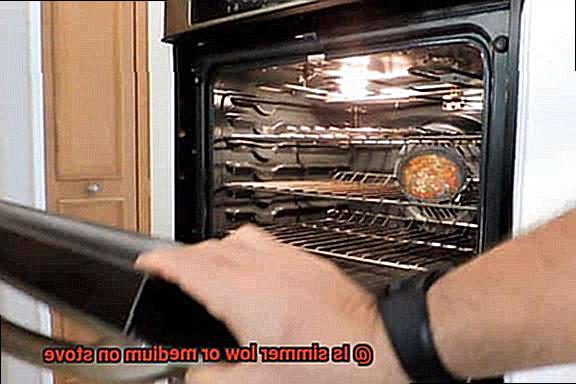
- Adjust the heat properly to low heat
- Use a pot or pan with a heavy bottom and tight-fitting lid
- Be patient and allow enough time for the flavors to develop
- Avoid unnecessary stirring
Tips for Mastering the Art of Simmering
Simmering is a cooking technique that should be in every home cook’s arsenal. It’s a gentle way to cook food, allowing it to develop flavors and become tender without boiling or burning. To help you master the art of simmering, here are five key tips to keep in mind.
Tip #1: Use Low Heat for Perfect Simmering
The first rule of simmering is to use low heat. High heat can cause the liquid to boil vigorously, which can toughen proteins and break apart delicate ingredients. Low heat allows for better temperature control and helps prevent sticking or scorching.
Tip #2: Choose Heavy-Bottomed Cookware
Using a heavy-bottomed pot or pan is crucial for even heat distribution. This ensures that your food cooks evenly and doesn’t burn on the bottom. A well-fitting lid is also essential to trap steam and prevent evaporation, which can lead to dry or tough food.
Tip #3: Add Enough Liquid
Make sure you add enough liquid to your pot or pan when simmering. If there’s not enough liquid, your food can burn or become dry. If you notice that the liquid level is too low, add more as needed.
Tip #4: Monitor Regularly
Simmering requires patience and time, so it’s crucial to monitor your food regularly. Check on your food every so often and adjust the heat as needed to maintain a steady simmer. Stirring occasionally can also help prevent sticking and ensure even cooking.
Tip #5: Avoid Over-Stirring Your Food
While it’s tempting to stir your food constantly, over-stirring can cause it to break apart and affect its texture. Instead, gently swirl the pot occasionally to ensure even cooking. Skim any impurities that rise to the surface during simmering, such as foam or fat.
Recipes That Benefit from Low-Temperature Simmering
Then it’s time to try low-temperature simmering. This cooking technique is the secret to unlocking rich flavors, tender textures, and hearty sauces in your dishes.
If you’re a fan of stews, then you know that beef stew requires a slow and gentle cooking process to become tender and flavorful. Low-temperature simmering achieves just that. By cooking the meat over low heat for an extended period, it becomes juicy and fork-tender. The sauce also thickens naturally as the ingredients break down, resulting in a hearty and delicious meal.
But low-temperature simmering isn’t limited to meat-based dishes. Chicken broth is another example of a recipe that benefits from this technique. By simmering chicken bones and vegetables over low heat, the flavors develop and intensify, creating a fragrant and flavorful broth that can be used as a base for soups or sauces.
One dish that requires low-temperature simmering is risotto. This Italian classic demands constant stirring as the rice absorbs the liquid gradually. By using low heat, the rice cooks evenly and becomes creamy without turning mushy.
So why is low-temperature simmering so crucial for these dishes? It allows the ingredients to cook slowly and evenly without breaking down or losing their texture. This results in tender meats, rich sauces, and perfectly cooked grains.
To achieve this technique, use a heavy-bottomed pot and avoid boiling or rapid boiling. Keep an eye on the dish, stirring occasionally, and adjust the temperature as needed.
What is the Difference Between Boiling and Simmering?
While these two cooking methods may appear similar at first glance, they actually have distinct differences that can make or break your dish. So let’s dive in.
Boiling is when a liquid reaches its boiling point, which is 212°F (100°C) at sea level. The heat is high and constant, causing the liquid to rapidly bubble and produce steam. This method is perfect for cooking pasta or blanching vegetables, but it can also be dangerous due to the high heat and potential for splashing. So if you’re boiling something, be sure to keep a close eye on it.
Simmering, on the other hand, involves heating a liquid to just below its boiling point, usually around 185-205°F (85-96°C). The heat is lower and gentler, producing a slow and steady bubbling. Simmering is ideal for cooking delicate foods like fish or poaching eggs, as it allows flavors to meld together slowly without overcooking the food.
So why does this matter? Well, understanding the difference between boiling and simmering can help you achieve the best results in your cooking endeavors. If you want tender meat or a flavorful stew, simmering is the way to go. This method not only ensures that your food remains moist and juicy but also allows all the flavors to blend together perfectly. Boiling, on the other hand, is great for reducing sauces or cooking something quickly.
To summarize, here’s a quick rundown of the key differences between boiling and simmering:
Boiling:
- High heat
- Rapid bubbling
- Ideal for cooking pasta or blanching vegetables
- Can be dangerous
Simmering:
yij7fPSezS0″ >
Conclusion
In conclusion, simmering is a fundamental cooking technique that every home cook should master. It involves cooking food in liquid at a low and steady temperature, resulting in dishes that are tender and bursting with flavor. Simmering at a low temperature ensures that your food won’t burn or boil over, while giving you more control over the cooking process. Achieving the perfect simmer requires careful attention to detail, including understanding simmering, adjusting heat sources, selecting the right cookware, using additional tools, and monitoring the simmer closely.
When it comes to simmering on a stove, keeping the temperature between 180°F and 205°F (82°C and 96°C) is ideal. Using a heavy-bottomed pot with a tight-fitting lid is essential for even heat distribution and preventing evaporation. Simmering at low temperatures also offers numerous benefits such as enhancing flavor profiles, making meat tender and juicy, retaining nutritional value of food, and conserving energy.
However, common mistakes can ruin your simmering experience. Failing to adjust the heat properly or using inappropriate cookware can lead to burning or unevenly cooked dishes. Stirring too often can also disrupt the delicate balance of flavors in your dish. To avoid these mistakes one needs to adjust the heat properly to low heat, use heavy-bottomed cookware with tight-fitting lids while adding enough liquid to prevent burning. Monitoring regularly is also necessary while avoiding unnecessary stirring.
Finally, recipes that benefit from low-temperature simmering include beef stew, chicken broth and risotto among others. Understanding the difference between boiling and simmering is also crucial as boiling involves high heat while rapid bubbling making it ideal for cooking pasta or blanching vegetables while simmering involves low to medium heat with gentle bubbling making it ideal for delicate foods like fish or poaching eggs allowing flavors to meld together slowly without overcooking the food.
In summary, mastering the art of simmering on a stove is essential for any home cook who wants to create delicious and flavorful dishes.


